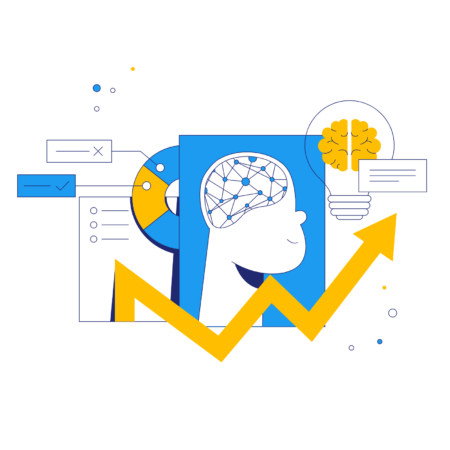Introduction
Artificial Intelligence (AI) has made significant strides in revolutionizing various industries, and education is no exception. In recent years, the emergence of generative language models has garnered tremendous attention in the field of education. These models, powered by advanced AI algorithms, possess the ability to generate human-like text and engage in natural language conversations. In this blog post, we will explore the rise of generative language models in education and delve into their advantages, potential misuses, and risks. Furthermore, we will discuss best practices for implementing these models in educational settings. By the end, you will have a better understanding of the implications and key considerations surrounding the use of generative language models in the realm of education.
Introducing Generative Language Models (GLMs)

Generative language models (GLMs), such as OpenAI’s ChatGPT and Google’s Bard are based on deep learning techniques and utilize large-scale neural networks to generate coherent and contextually relevant text. These models are trained on vast amounts of data, including books, articles, and internet sources. By analyzing patterns and understanding context, generative language models can generate responses that closely mimic human-like conversations. For example, in online education platforms, these models can act as intelligent virtual assistants, answering students’ questions, providing explanations, and offering feedback on their assignments.
Advantages of Using GLMs in Asynchronous Online Education
Generative language models (GLMs) offer several advantages in asynchronous online learning environments. Asynchronous learning allows students to access educational content and interact with AI models at their own pace and convenience. These models can provide personalized support by adapting to individual learning styles and preferences. For instance, a generative language model can recommend supplementary resources based on a student’s previous interactions, identify knowledge gaps, and provide targeted explanations to enhance comprehension.

Moreover, GLMs can foster engagement by promoting interactive learning experiences. They can simulate discussions and encourage critical thinking through question-and-answer sessions. For example, an AI-powered chatbot can engage students in dialogue, prompting them to analyze and articulate their thoughts on a given topic. This interaction promotes deeper understanding and enables students to refine their ideas in a conversational setting.
Potential Misuses and Risks of Using GLMs
While generative language models (GLMs) offer immense potential, there are potential misuses and risks associated with their implementation in education. One of the primary concerns is the potential for misinformation and biased responses. GLMs learn from vast amounts of data, including online sources that may contain inaccuracies or biases. If not monitored and fine-tuned, the models can inadvertently perpetuate misinformation or biased views.

To mitigate this risk, continuous monitoring and fine-tuning of the models are essential. For example, educational institutions can employ algorithms and filters to verify and fact-check the information generated by the models. They can also involve human reviewers who oversee and provide feedback on the model’s responses to ensure accuracy and mitigate biases.
Another risk is the overreliance on GLMs, which may lead to a diminished emphasis on critical thinking skills and reduced human interaction. To address this, it is crucial to strike a balance between AI assistance and human guidance. While AI models can provide valuable support, human instructors play a vital role in nurturing critical thinking, interpreting complex concepts, and facilitating meaningful discussions. For instance, teachers can incorporate activities that prompt students to evaluate and critique the information provided by AI models, fostering a more well-rounded learning experience.
Best Practices of Using GLMs in Education
To mitigate the risks and maximize the benefits of generative language models in education, several best practices should be followed:

Firstly, continuous monitoring and fine-tuning of the models are vital to ensure accurate and unbiased responses. Educational institutions should establish review processes that involve human oversight to detect and correct any misinformation or biases that may arise.
Secondly, clear guidelines and ethical frameworks for model usage should be established. These guidelines can outline the responsible and ethical use of generative language models. For instance, educational institutions can define the limits of the AI model’s capabilities and ensure transparency regarding the sources of data used for training.
Furthermore, integrating human supervision and peer collaboration alongside AI models is crucial. Human instructors can provide guidance, interpret complex concepts, and facilitate discussions that encourage critical thinking. By incorporating collaborative activities, students can engage in peer-to-peer learning and develop interpersonal skills.
Takeaways
As we conclude, it is important to reflect on the key ideas surrounding the use of generative language models in education. These models offer great potential for enhancing asynchronous online education by providing personalized support and guidance to students. Their adaptability to individual learning styles and their ability to bridge knowledge gaps contribute to a more effective learning experience.
However, caution must be exercised to avoid potential misuses and risks such as misinformation and diminished human interaction. Continuous monitoring, fact-checking mechanisms, and human oversight are essential to ensure accurate and unbiased responses. Moreover, integrating AI models with human guidance and fostering critical thinking skills can create a holistic and effective learning environment.
Remember, as we move forward, the balance between AI and human interaction is crucial in nurturing well-rounded individuals equipped to thrive in an increasingly AI-driven world. By harnessing the power of generative language models responsibly, we can unlock new frontiers in education and empower students to reach their full potential.
Finally, as the educational community continues to explore the potential of generative language models, it is vital to tread carefully and ensure their responsible implementation in educational contexts. While we are still working towards understanding how to utilize these models in a responsible manner, there are existing AI models that have been purposefully trained and rigorously tested for specific domains, such as second language learning and assessment.
Discover the AI capabilities of Interactivo, a platform that harnesses cutting-edge AI advancements to provide useful and effective features in the realm of teaching and assessing English as a second language.

